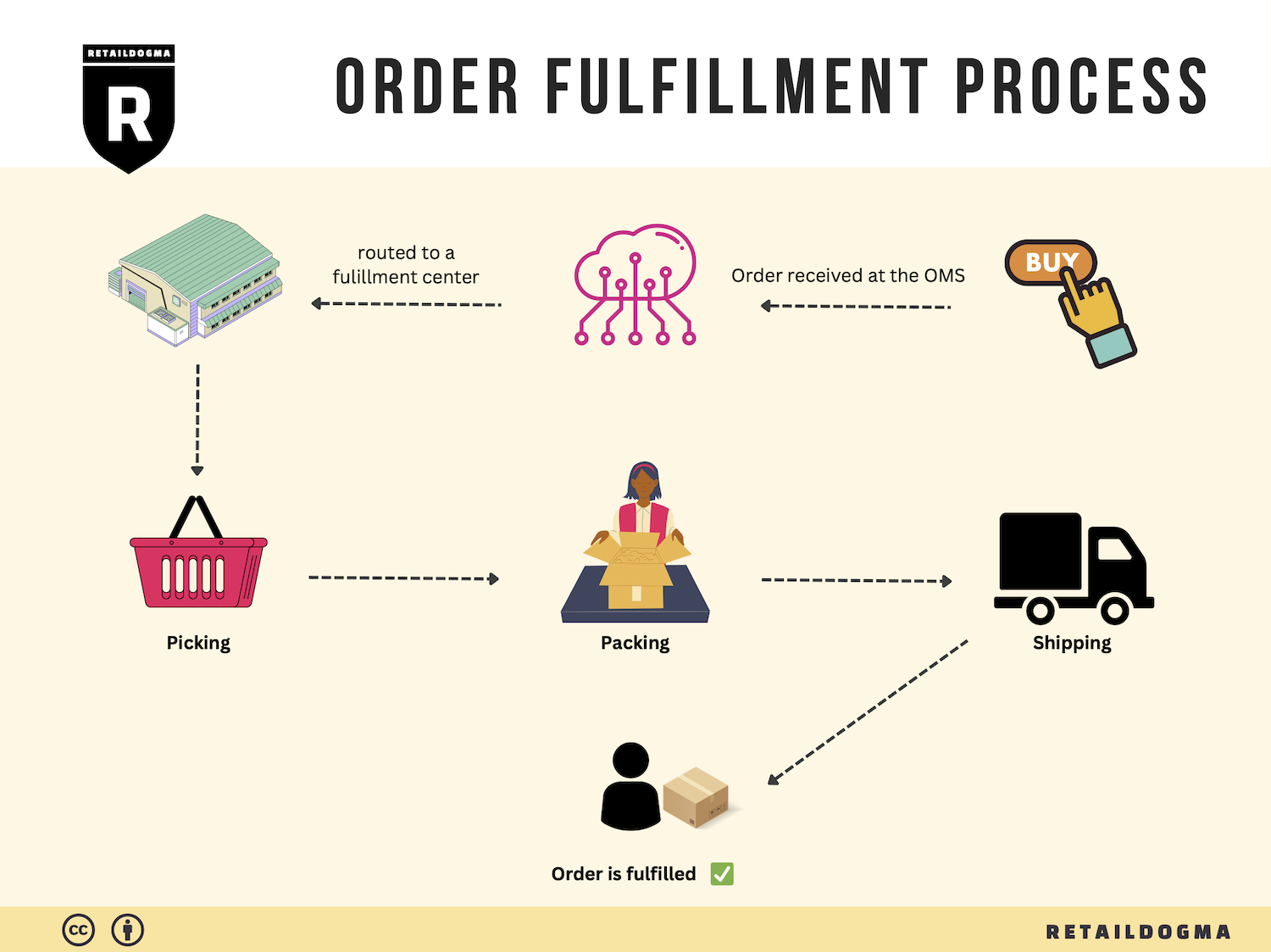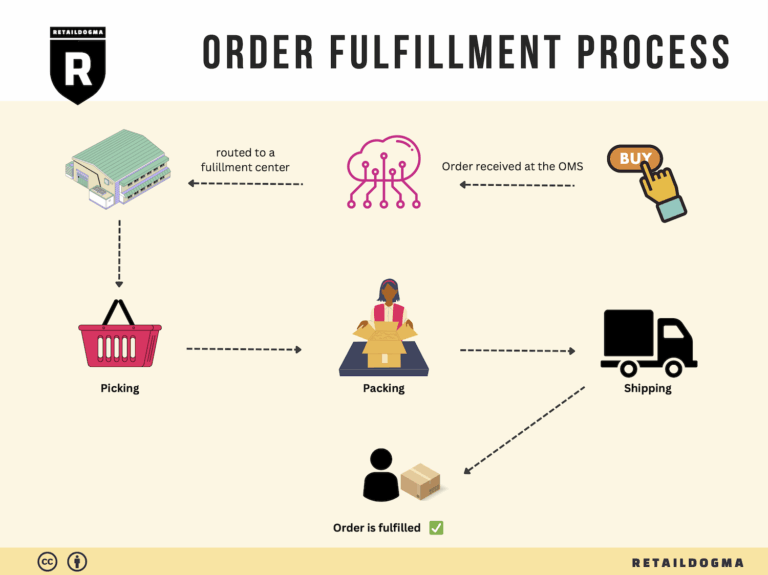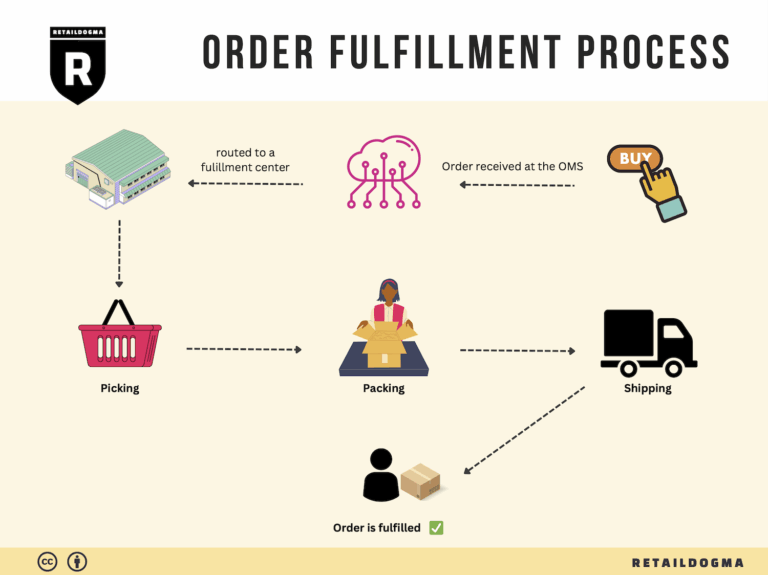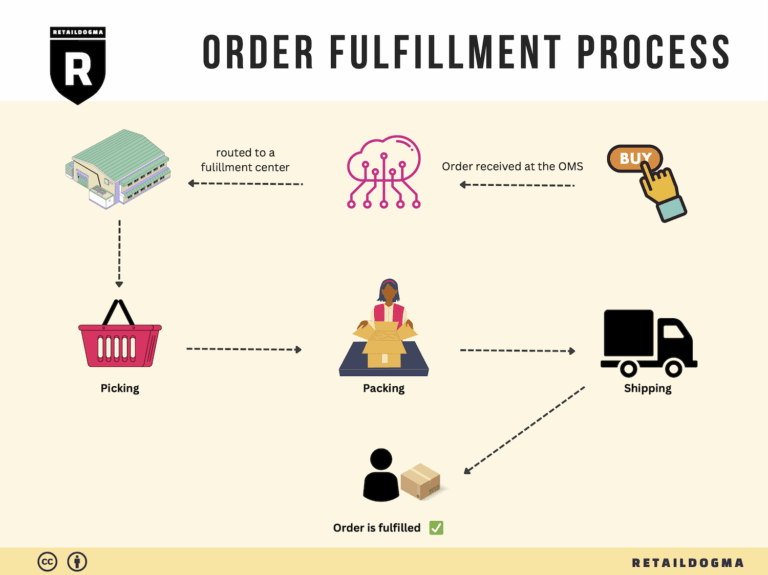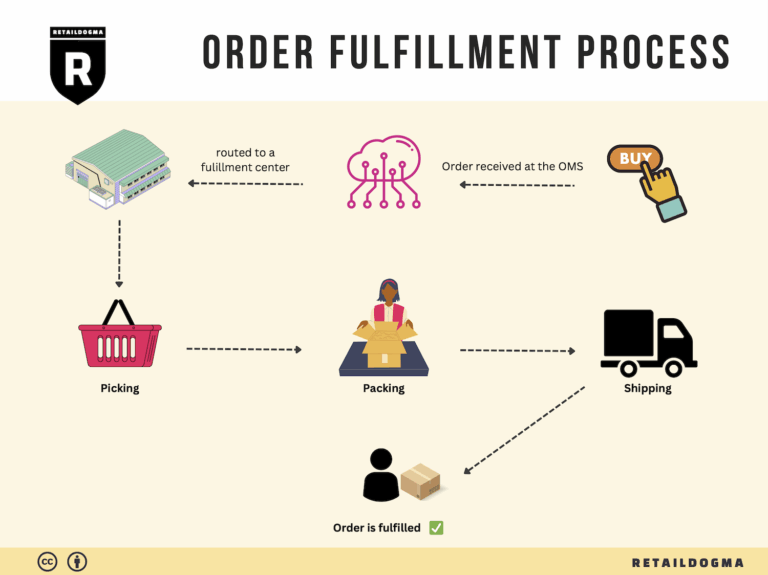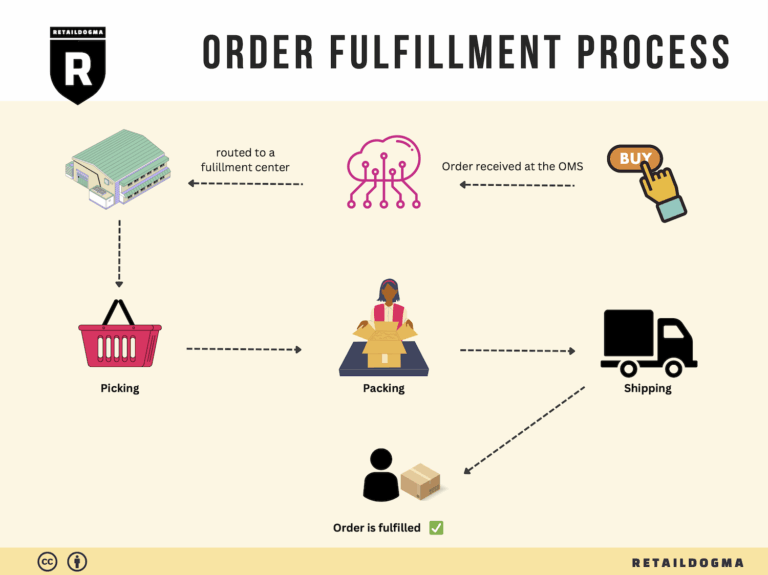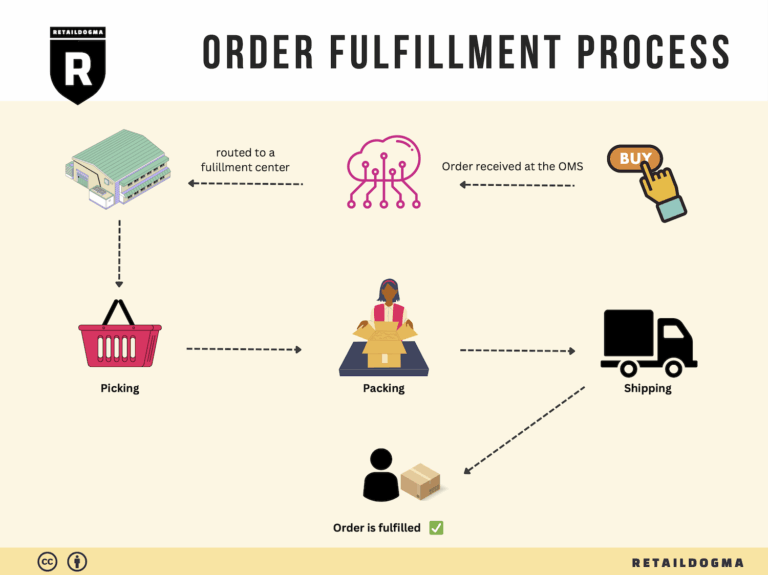What Is A Fulfillment Center? A Complete Guide (2025)
What is E-commerce Fulfillment? An Introduction for Growing Businesses
Understanding E-commerce Fulfillment
As a growing online business, you may find yourself overwhelmed by the demands of packing and shipping orders. Managing logistics can quickly become a daunting task, often taking your focus away from what truly matters: scaling your sales and enhancing your customer experience. E-commerce fulfillment, simply put, is the process of getting a product from your inventory to your customer’s doorstep. It encompasses everything from warehousing and inventory management to packing, shipping, and handling returns.
For many entrepreneurs, fulfillment can feel like a maze. With various models available, such as Third-Party Logistics (3PL) and Fulfillment by Amazon (FBA), it’s crucial to understand the options that best fit your business needs. Each model comes with its own set of advantages and challenges, and the right choice can significantly impact your operational efficiency and customer satisfaction.
This guide aims to demystify e-commerce fulfillment by covering several key areas:
-
Fulfillment Models: We’ll explore the different fulfillment models available, including 3PL and FBA, to help you determine which option aligns best with your business strategy and growth objectives.
-
Core Services: Understanding the essential services offered by fulfillment partners—such as inventory storage, order picking and packing, shipping, and customer service—is vital for making informed decisions.
-
Choosing a Partner: Selecting the right fulfillment partner can be a game-changer for your business. We’ll provide insights into what to look for in a partner, including their capabilities, technology, and customer support.
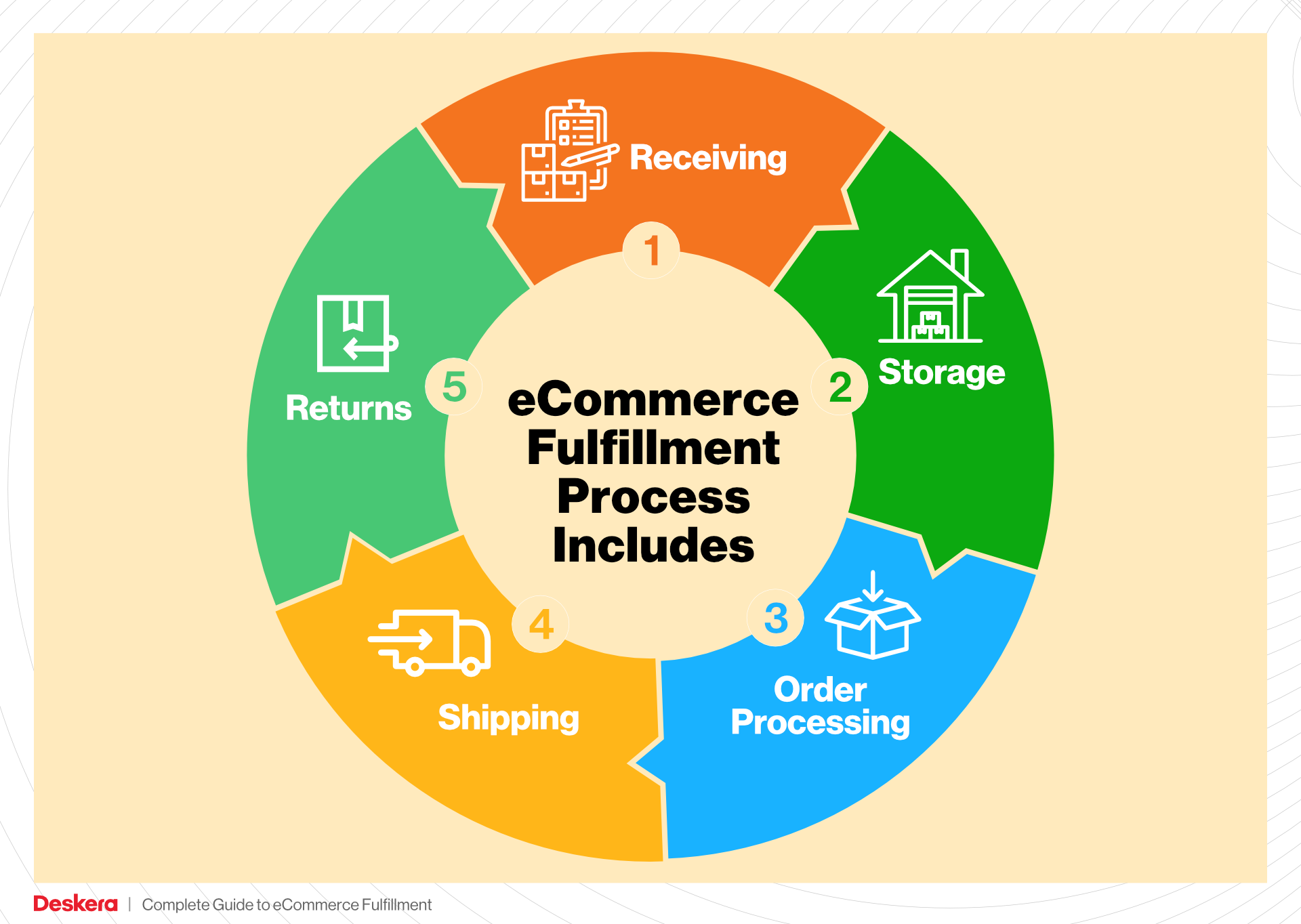
-
Pricing Structures: Fulfillment costs can vary widely, so we’ll break down typical pricing models and what factors influence these costs. Knowing what to expect will help you budget effectively and avoid surprises.
The ultimate goal of this guide is to empower you, the business owner, with the knowledge and tools necessary to make smart decisions about your logistics strategy. By understanding the nuances of e-commerce fulfillment, you can streamline your operations, enhance customer satisfaction, and set your business up for sustained growth. Let’s dive into the world of e-commerce fulfillment and unlock the potential it holds for your brand.
What You’ll Learn In This Guide
- What is E-commerce Fulfillment? An Introduction for Growing Businesses
- The Order Fulfillment Process: From ‘Buy’ Button to Customer’s Door
- Comparing Fulfillment Models: In-House vs. 3PL vs. Dropshipping
- A Deep Dive into Amazon FBA: Pros, Cons, and Who It’s For
- Core Services Offered by Fulfillment Centers
- How to Choose a Fulfillment Partner: A 6-Point Checklist
- Understanding Fulfillment Pricing: A Breakdown of Common Fees
- Frequently Asked Questions (FAQs) about Fulfillment
- Conclusion: Is Outsourcing Fulfillment the Right Move for Your Business?
- Important Disclaimer
The Order Fulfillment Process: From ‘Buy’ Button to Customer’s Door
1. Receiving Inventory
The first step in the order fulfillment process is receiving inventory into your warehouse or fulfillment center. This involves checking in shipments from suppliers and ensuring that the correct quantities and items are received. Each product is assigned a unique identifier, known as a Stock Keeping Unit (SKU), which helps in tracking inventory accurately.
Importance: Proper inventory receiving is crucial because it sets the foundation for the entire fulfillment operation. Errors at this stage can lead to stock discrepancies, which can cause delays in order fulfillment and customer dissatisfaction. A robust receiving process also allows for timely updates to inventory management systems, ensuring that stock levels are accurately reflected.
Key Term: SKU (Stock Keeping Unit) – A unique identifier for each product that aids in inventory tracking and management.
2. Warehouse Storage
Once the inventory is received, the next step is warehouse storage. This involves organizing the products in a way that maximizes space and facilitates efficient picking. Products should be stored based on various criteria, such as size, weight, and sales frequency, often referred to as ABC analysis.
Importance: Effective warehouse storage is vital for optimizing the order fulfillment process. Well-organized storage reduces the time it takes to locate and pick items, directly impacting the speed of order fulfillment. Additionally, a logical layout minimizes the risk of damage to goods and enhances overall operational efficiency.
Key Term: ABC Analysis – A method for categorizing inventory based on importance, where ‘A’ items are high value but low quantity, ‘B’ items are moderate value and quantity, and ‘C’ items are low value but high quantity.
3. Order Picking
Order picking is the process of retrieving items from storage to fulfill a customer order. This step often involves the use of pick lists, which are generated based on incoming orders and indicate the specific items and quantities required. There are various picking methods, including single-order picking, batch picking, and zone picking.

Importance: Efficient order picking is crucial for maintaining quick turnaround times. The accuracy of this step directly affects customer satisfaction—incorrect items lead to returns and negative experiences. The choice of picking method can greatly influence the speed and accuracy of the process, making it essential to align your picking strategy with your business’s order volume and complexity.
Key Term: Pick List – A document or digital tool that outlines the items and quantities to be picked for a specific order.
4. Order Packing
After items are picked, they move to the packing stage. In this step, products are securely packed for shipment, often using branded packaging to enhance the unboxing experience. This may include cushioning materials to protect fragile items and packing slips that provide order details.
Importance: Proper order packing ensures that items arrive at their destination safely and in good condition. It also plays a significant role in branding; an attractive unboxing experience can lead to positive customer reviews and repeat purchases. Effective packing strategies can also optimize shipping costs by minimizing the size and weight of packages.
Key Term: Packing Slip – A document included in the package that lists the items contained within, serving as a receipt for the customer.
5. Shipping & Delivery
The final step in the order fulfillment process is shipping and delivery. This involves selecting the appropriate carrier and shipping method based on factors such as cost, speed, and destination. Once the package is shipped, tracking information is usually provided to the customer to enhance transparency.
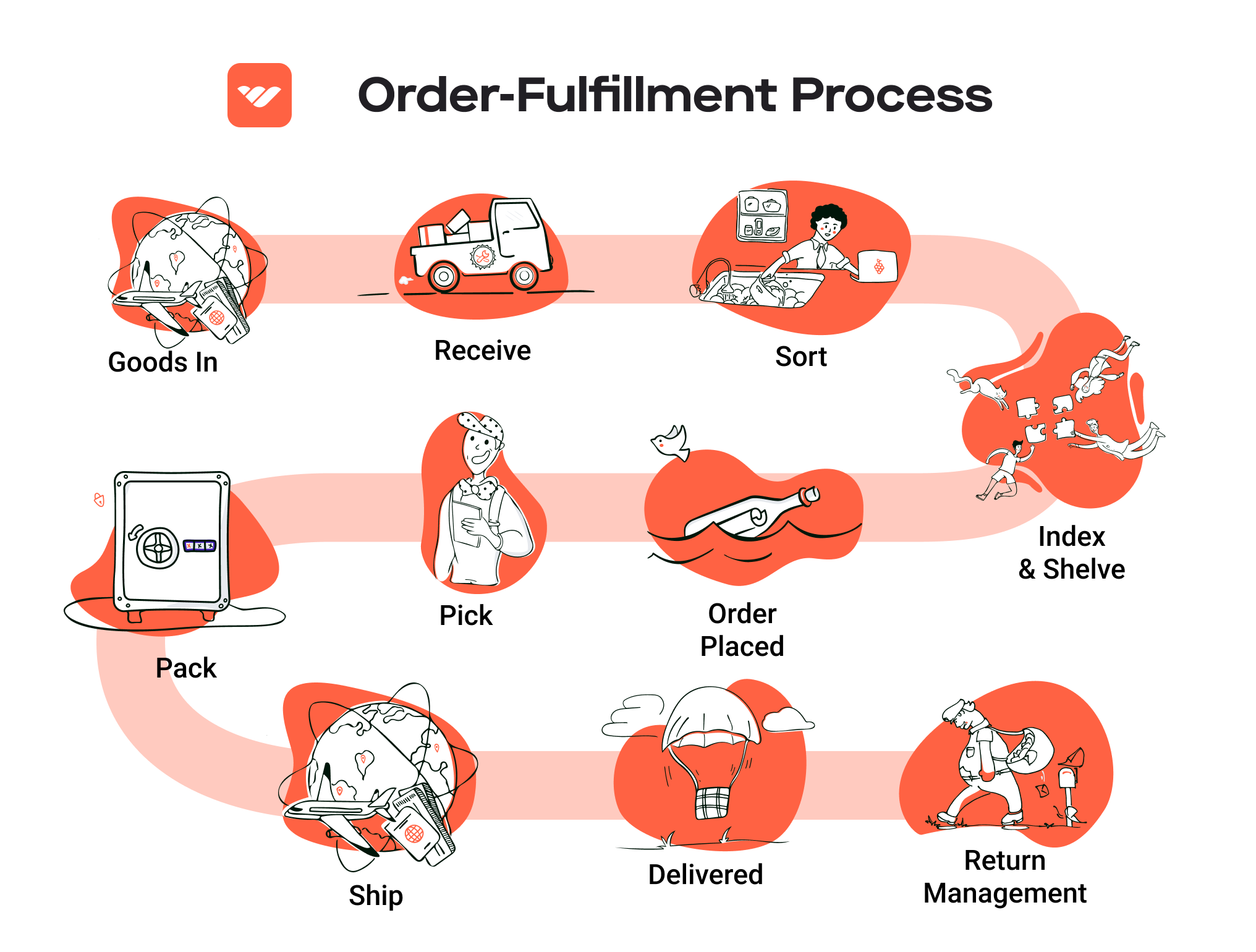
Importance: Timely and reliable shipping is critical for customer satisfaction. In today’s e-commerce landscape, consumers expect fast delivery times, and delays can lead to dissatisfaction and lost sales. Establishing strong relationships with carriers and utilizing advanced shipping technologies can help streamline this process and reduce costs.
Key Term: Tracking Information – A unique code that allows customers to monitor the progress of their shipment in real time, enhancing the overall customer experience.
By understanding and optimizing each of these steps in the order fulfillment process, e-commerce businesses can improve efficiency, reduce costs, and enhance customer satisfaction, ultimately driving growth and scalability.
Comparing Fulfillment Models: In-House vs. 3PL vs. Dropshipping
Fulfillment Model Comparison
| Model | Who Handles Inventory | Best For (Business Stage) | Key Advantage | Key Disadvantage |
|---|---|---|---|---|
| In-House Fulfillment | The business itself | Startups and small businesses | Full control over inventory and operations | High overhead costs and resource-intensive |
| Third-Party Logistics (3PL) | A specialized logistics provider | Growing businesses and scaling brands | Scalable solutions and reduced operational burden | Less control over inventory management |
| Dropshipping | Supplier or manufacturer | New entrants and niche markets | Low overhead and minimal risk | Lower margins and reliance on supplier reliability |
In-House Fulfillment
In-house fulfillment involves managing all aspects of inventory, warehousing, and shipping within the business itself. This model is typically adopted by startups and small businesses that want complete control over their operations, including the handling of products, order processing, and customer interactions. The key advantage of in-house fulfillment is the ability to maintain high levels of quality control and brand representation, as businesses can directly oversee how their products are stored, packaged, and shipped. This direct oversight can lead to enhanced customer experiences, as businesses can tailor their processes to meet specific brand standards and customer expectations.
However, in-house fulfillment comes with significant challenges. The operational costs can be high, as businesses must invest in warehousing, staffing, technology, and logistics. As sales grow, the complexities of managing inventory and order fulfillment can increase exponentially, often requiring additional resources and infrastructure. Moreover, businesses may face difficulties in scaling their operations quickly to meet demand fluctuations, which can lead to delays and customer dissatisfaction. Thus, while in-house fulfillment offers control, it may not be sustainable for businesses looking to scale rapidly.
Third-Party Logistics (3PL)
Third-party logistics (3PL) refers to outsourcing logistics and fulfillment operations to a specialized provider. This model is particularly beneficial for growing businesses and brands looking to scale their operations without the burden of managing logistics themselves. 3PL providers, like ShipBob and PFS Commerce, offer a comprehensive suite of services including warehousing, inventory management, order fulfillment, and shipping. By leveraging a 3PL, businesses can benefit from their established networks, expertise, and technology, which can lead to significant cost savings and increased efficiency.
The primary advantage of using a 3PL is scalability. As businesses grow, a 3PL can quickly adjust to changing demands by providing additional storage and shipping capabilities without the need for businesses to invest heavily in their own infrastructure. This allows businesses to focus on core activities such as marketing and product development. However, a key disadvantage is the potential loss of control over inventory management and customer experience. Businesses must rely on the 3PL’s processes, which may not always align perfectly with their brand values or customer expectations. Additionally, businesses may face challenges in communication and coordination with their 3PL partner, especially during peak seasons.
Dropshipping
Dropshipping is a fulfillment model where the retailer does not hold inventory but instead relies on suppliers to ship products directly to customers. This model is ideal for new entrants and niche markets, as it allows businesses to launch without significant upfront investments in inventory or warehousing. The primary advantage of dropshipping is its low overhead costs and minimal financial risk, as businesses only purchase products after making a sale. This enables entrepreneurs to test new products and markets without the burden of inventory.
Despite its advantages, dropshipping also comes with notable drawbacks. Profit margins can be lower compared to traditional fulfillment methods, as retailers often pay a premium for the convenience of not holding inventory. Additionally, businesses are reliant on suppliers for product quality, shipping times, and inventory availability. If a supplier fails to deliver on time or provides subpar products, it reflects poorly on the retailer’s brand and can lead to customer dissatisfaction. Furthermore, competition can be fierce in the dropshipping space, with many businesses selling similar products, making it challenging to differentiate and establish a strong brand presence.
Conclusion
Choosing the right fulfillment model is crucial for e-commerce businesses looking to scale effectively. Each model—In-House Fulfillment, Third-Party Logistics, and Dropshipping—comes with its own set of advantages and disadvantages. Businesses must carefully consider their current stage, operational capabilities, and long-term goals when deciding which fulfillment strategy aligns best with their growth objectives. By understanding the nuances of each model, e-commerce owners and operations managers can make informed decisions that enhance their logistics efficiency and customer satisfaction.
A Deep Dive into Amazon FBA: Pros, Cons, and Who It’s For
Understanding Fulfillment by Amazon (FBA)
Fulfillment by Amazon (FBA) is a logistics service offered by Amazon that allows e-commerce sellers to store their products in Amazon’s fulfillment centers. Amazon takes care of the storage, packaging, and shipping of products on behalf of the sellers, which allows these sellers to leverage Amazon’s vast logistics network. When a customer orders a product, Amazon handles the entire fulfillment process, including customer service and returns. This service enables sellers to focus on other aspects of their business, such as marketing and product development.
How FBA Works
-
Setup: Sellers create an Amazon seller account and choose the products they want to sell through FBA. They then prepare their products according to Amazon’s guidelines and ship them to designated Amazon fulfillment centers.
-
Storage: Once the products arrive at the fulfillment center, Amazon stores them in its warehouses until an order is placed.
-
Order Processing: When a customer orders a product, Amazon picks, packs, and ships the item directly to the customer. Amazon also handles customer inquiries and returns, providing a seamless experience for the buyer.
-
Payment: After the sale, Amazon transfers the proceeds (minus fees) to the seller’s account, typically every two weeks.
-
Reporting: Sellers have access to detailed reporting tools that track inventory levels, sales performance, and customer feedback, allowing them to make informed business decisions.
Pros of Using FBA
-
Prime Eligibility: Products fulfilled through FBA are eligible for Amazon Prime, providing access to millions of Prime members who prefer fast, free shipping. This can significantly increase sales volume.
-
Customer Trust: Amazon’s reputation for reliability enhances customer confidence. When buyers see that a product is fulfilled by Amazon, they are more likely to trust the seller and make a purchase.
-
Multi-Channel Fulfillment: FBA can be used to fulfill orders from other sales channels, such as Shopify or eBay. This flexibility allows sellers to streamline their operations and manage inventory more effectively.
-
Scalability: FBA allows sellers to scale their business without worrying about the logistics of storage and shipping. As demand grows, sellers can send more inventory to Amazon’s warehouses, which can handle the increased volume.
-
Time Savings: By outsourcing fulfillment to Amazon, sellers can focus on other critical business areas, such as product development and marketing, rather than logistics.
Cons of Using FBA
-
High Fees: FBA comes with various fees, including storage fees, fulfillment fees, and additional charges for long-term storage. These costs can add up, especially for sellers with lower-margin products.
-
Strict Inventory Rules: Amazon has stringent inventory management policies that sellers must follow. Failure to adhere to these guidelines can result in penalties, including additional fees and inventory removal.
-
Commingling Risks: FBA products may be commingled with other sellers’ inventory, which can pose risks. If a customer receives a defective or damaged item, it can harm the seller’s reputation, even if the product was not theirs.
-
Limited Control: Sellers relinquish some control over their inventory and fulfillment processes. This can be a concern for those who prefer to manage these aspects directly.
-
Dependency on Amazon: Relying on FBA can create dependency on Amazon’s platform. Changes in Amazon’s policies or algorithms can significantly impact a seller’s business, making it essential to diversify sales channels.
Who is FBA Best For?
Fulfillment by Amazon is particularly well-suited for:
-
Small to Medium-Sized Businesses: Businesses looking to scale quickly without the overhead of managing their own fulfillment infrastructure can benefit greatly from FBA. It allows them to tap into Amazon’s vast customer base and logistics capabilities.
-
Sellers with High-Volume Products: Brands that have a steady stream of sales and higher inventory turnover can leverage FBA to maximize efficiency and reduce shipping times.
-
New Sellers: Entrepreneurs entering the e-commerce space can use FBA to simplify their operations and gain access to Amazon’s customer trust and Prime membership benefits from the get-go.
-
Brands Focused on Growth: Companies aiming to expand their reach in the e-commerce market can utilize FBA to gain quick access to new customers and markets without the complexity of setting up their own distribution channels.
-
Businesses with Seasonal Demand: Sellers with products that see seasonal spikes can benefit from FBA’s scalability, allowing them to ramp up inventory quickly for peak periods without long-term storage commitments.
In conclusion, Fulfillment by Amazon offers numerous advantages that can significantly enhance an e-commerce business’s operational efficiency and sales potential. However, the high fees and risks associated with strict inventory management must be carefully considered. For many sellers, particularly those looking to scale and reach a broader audience, FBA remains a compelling option in the competitive e-commerce landscape.
Core Services Offered by Fulfillment Centers
Inventory Management & Warehousing
Inventory management and warehousing are fundamental services provided by fulfillment centers that ensure e-commerce businesses maintain optimal stock levels while minimizing costs. This service involves the systematic tracking and storage of products in a strategically located warehouse or distribution center.
What It Is
Fulfillment centers utilize advanced inventory management systems to monitor stock levels in real-time. This includes tracking incoming shipments, managing stock rotation, and providing detailed reports on inventory status. Warehousing encompasses the physical storage of products, ensuring they are stored under optimal conditions to prevent damage and spoilage.
Benefits
For e-commerce businesses, effective inventory management and warehousing translate to reduced operational costs and improved customer satisfaction. By accurately tracking inventory, businesses can avoid stockouts or overstock situations, both of which can lead to lost sales or increased holding costs. Furthermore, strategically located warehouses enable faster shipping times, meeting modern consumer expectations for prompt delivery. This can significantly enhance a brand’s reputation and customer loyalty.
Pick and Pack Services
Pick and pack services are crucial in the fulfillment process, where products are selected from the warehouse and packaged for shipment to customers. This operation is essential for ensuring that orders are fulfilled accurately and efficiently.
What It Is
In a typical pick and pack operation, fulfillment center staff or automated systems receive order information and retrieve the specified items from inventory. Each item is then carefully packed into shipping boxes, often incorporating branded packaging materials to enhance the customer experience.
Benefits
The primary advantage of pick and pack services lies in their ability to streamline order fulfillment. By outsourcing this process, e-commerce businesses can significantly reduce the time and labor costs associated with fulfilling orders in-house. Additionally, high accuracy rates in picking and packing minimize the likelihood of errors, which can lead to costly returns and dissatisfied customers. Fast and accurate fulfillment not only drives repeat business but also contributes to positive reviews and word-of-mouth referrals.
Kitting and Assembly
Kitting and assembly services enable e-commerce businesses to offer customized product bundles or assembled items to their customers. This service can enhance product offerings and create unique selling propositions in competitive markets.
What It Is
Kitting involves grouping individual items into a single ready-to-ship package. This can include combining various products into a gift set or assembling components into a final product. Fulfillment centers often have the capability to handle specialized kitting projects, ensuring that products are assembled according to specific customer requirements.
Benefits
The ability to offer kitted products can significantly increase average order values and attract new customer segments. For instance, creating bundled offers can encourage customers to purchase more items at once, enhancing overall sales. Additionally, outsourcing kitting and assembly to fulfillment centers allows businesses to focus on their core operations while leveraging the expertise and efficiency of fulfillment partners. This not only saves time but also reduces labor costs associated with in-house assembly.
Returns Management (Reverse Logistics)
Returns management, often referred to as reverse logistics, is a critical service that enables e-commerce businesses to handle product returns efficiently. This service is particularly important in today’s consumer-driven market, where return policies can influence purchasing decisions.
What It Is
Returns management encompasses the processes involved in handling returned products, including receiving returned items, inspecting their condition, restocking, and managing refunds or exchanges. Fulfillment centers provide a streamlined approach to this complex process, ensuring that returns are processed quickly and accurately.
Benefits
An effective returns management system can significantly enhance customer satisfaction and loyalty. When customers know they can return items easily, they are more likely to make purchases, even if there is a risk of needing to return something. Fulfillment centers can also analyze return data to identify trends, helping businesses understand customer preferences and improve product offerings. Moreover, efficient handling of returns can minimize losses associated with unsold inventory, ultimately contributing to a healthier bottom line.
In conclusion, partnering with a fulfillment center offers e-commerce businesses a robust suite of services that can enhance operational efficiency, reduce costs, and improve customer satisfaction. By leveraging services such as inventory management, pick and pack, kitting, and returns management, businesses can focus on growth and scaling their operations while ensuring a seamless fulfillment experience for their customers.
How to Choose a Fulfillment Partner: A 6-Point Checklist
Location & Warehouse Network
Importance: The geographical placement of a fulfillment partner’s warehouses can significantly impact shipping times, costs, and customer satisfaction. A well-distributed network of warehouses allows for faster delivery and reduced shipping costs, especially for businesses looking to expand internationally.
Questions to Ask:
– Where are your fulfillment centers located, and how do they align with my target markets?
– How do you handle shipping logistics to ensure timely deliveries?
– Can you provide insights into your carrier partnerships and shipping rates based on various destinations?
Technology & Integrations
Importance: In today’s digital age, the technology behind order fulfillment is crucial for operational efficiency. A partner that utilizes advanced technology can streamline processes, enhance inventory management, and provide real-time data insights. Furthermore, the ability to integrate with your existing e-commerce platform is essential for seamless operations.
Questions to Ask:
– What fulfillment technology do you use, and how does it enhance the customer experience?
– Can your system integrate with my e-commerce platform, ERP, and other tools I currently use?
– Do you offer real-time inventory tracking, and how is data shared with your clients?
Specializations (e.g., Cold Storage, Oversized Items)
Importance: Different businesses have unique product requirements. Some may need specialized handling, such as cold storage for perishable goods or the capacity to manage oversized items. Understanding a partner’s specializations can help ensure that your products are handled properly and meet industry standards.
Questions to Ask:
– What types of specialized fulfillment services do you offer?
– Do you have facilities equipped for specific product types, such as temperature-controlled storage?
– How do you ensure compliance with regulations pertinent to specialized goods?
Scalability & Capacity
Importance: As your business grows, your fulfillment needs will evolve. It’s essential to choose a partner that can scale with your business without compromising service quality. This includes both physical capacity in terms of space and technological capacity to handle increased order volumes.
Questions to Ask:
– How do you manage peak seasons or unexpected surges in order volume?
– What is your current capacity, and how quickly can you scale up operations if needed?
– Can you provide examples of how you have supported other clients during their growth phases?
Pricing and Contracts
Importance: Understanding the pricing structure and contract terms is critical to ensuring that you remain profitable. Transparency in pricing can prevent unexpected costs that could affect your bottom line. Additionally, flexibility in contracts can allow for adjustments as your business needs change.
Questions to Ask:
– Can you provide a detailed breakdown of your pricing structure, including any hidden fees?
– What are the contract terms, and is there flexibility for renegotiation based on performance or changes in my business?
– How do you handle pricing adjustments for shipping rates and service changes?
Customer Support & Reviews
Importance: Exceptional customer support can make a significant difference in your fulfillment experience. A partner that is responsive and helpful can resolve issues quickly, minimizing disruptions to your operations. Additionally, reviewing customer testimonials can provide insights into the partner’s reliability and service quality.
Questions to Ask:
– What customer support channels do you offer (e.g., phone, email, live chat)?
– How do you handle service issues, and what is your average response time?
– Can you provide references or case studies from clients in similar industries?
Conclusion
Choosing the right fulfillment partner is a pivotal decision that can influence your e-commerce success. By carefully evaluating potential partners against this checklist, you can make an informed choice that aligns with your business goals and enhances your operational efficiency. Remember, the right partner should not only meet your current needs but also support your long-term growth strategy.
Understanding Fulfillment Pricing: A Breakdown of Common Fees
Initial Setup Fees
Initial setup fees are typically charged when you first engage with a fulfillment provider. These fees cover the costs associated with onboarding your business, which may include account setup, software integration, and initial inventory processing. Depending on the complexity of your operations, these fees can vary significantly.
For example, if you need customized software solutions or specific warehouse configurations, the setup fees might be higher. Conversely, if your business can easily integrate with existing systems, the fees may be lower. It’s essential to clarify what is included in the setup fee to avoid surprises; some providers may also charge for training staff on their systems.
Receiving Fees
Receiving fees apply when your inventory arrives at the fulfillment center. These fees are typically calculated based on the number of units received or the total weight of the shipment. The receiving process includes unloading, inspecting, and storing the products in the warehouse.
When evaluating receiving fees, consider the complexity of your products. Items that require special handling or additional quality checks may incur higher fees. Moreover, if your shipments are frequent, some fulfillment centers offer discounts for bulk receiving, which can significantly reduce your overall costs.
Storage Fees (per pallet/bin)
Storage fees are charged for the space your inventory occupies in the fulfillment center. These fees are usually calculated on a per-pallet or per-bin basis and can vary depending on the provider and the location of the warehouse.
Typically, storage fees are charged monthly, and the rate may differ between standard and climate-controlled spaces. For businesses with seasonal fluctuations, understanding how storage fees are calculated can help in strategizing inventory levels. If you have slow-moving products, it’s advisable to negotiate storage rates or consider utilizing just-in-time inventory strategies to minimize these costs.
Pick & Pack Fees (per item/order)
Pick and pack fees are incurred each time an order is fulfilled. This charge covers the labor involved in locating items, packing them for shipment, and preparing the order for delivery. Pick and pack fees are usually calculated on a per-item or per-order basis.
The complexity of the pick-and-pack operation can influence these fees. For instance, if your orders frequently contain multiple items or require special packing materials, you may face higher costs. To optimize these fees, consider streamlining your product offerings or using standardized packaging to simplify the fulfillment process.
Shipping Fees
Shipping fees encompass the costs associated with delivering orders to customers. These fees can vary widely based on factors such as the shipping method (standard, expedited, etc.), package weight, destination, and the carrier used. Most fulfillment providers leverage their volume to negotiate better shipping rates, which can be passed on to you.
When assessing shipping fees, it’s essential to understand the different options available. Some providers offer flat-rate shipping, while others charge based on weight and distance. Additionally, consider whether the fulfillment center offers international shipping, as this can impact your ability to expand into new markets.
Tips for Getting an Accurate Quote
-
Be Detailed: Provide as much information as possible about your business model, inventory types, and expected order volumes. This will help fulfillment providers give you a more tailored quote.
-
Ask About Discounts: Inquire about volume discounts, especially if you expect to scale quickly. Many providers are willing to negotiate pricing based on anticipated order growth.
-
Request a Breakdown: Ensure that the quote includes a detailed breakdown of all fees—setup, receiving, storage, pick & pack, and shipping. This transparency will help you compare different providers effectively.
-
Consider Long-term Costs: Look beyond initial fees and consider the long-term costs associated with each fulfillment partner. Evaluate how their pricing structures align with your growth plans.
-
Test the Services: If possible, run a trial period with a potential provider to assess their service quality and efficiency before committing to a long-term contract.
By understanding these common fulfillment pricing models, e-commerce business owners can make informed decisions that align with their operational needs and growth aspirations.
Frequently Asked Questions (FAQs) about Fulfillment
1. What is global specialty fulfillment?
Global specialty fulfillment refers to the tailored logistics and order fulfillment services designed to meet the unique needs of e-commerce businesses operating internationally. This includes handling specific product types, optimizing shipping routes, managing customs processes, and providing localized customer support to ensure a seamless purchasing experience across different markets.
2. What’s the difference between a warehouse and a fulfillment center?
A warehouse is primarily used for storing inventory, while a fulfillment center is focused on processing and shipping orders. Fulfillment centers are equipped with systems and processes to pick, pack, and ship products directly to customers, often including value-added services like returns processing and inventory management.
3. What is a 3PL?
A 3PL, or third-party logistics provider, is a company that offers outsourced logistics services, which can include transportation, warehousing, fulfillment, and distribution. By partnering with a 3PL, businesses can leverage their expertise, technology, and infrastructure to improve efficiency and reduce costs in their supply chain operations.
4. How much do fulfillment services cost?
Fulfillment service costs can vary widely based on factors such as the size of the business, order volume, the complexity of the products, and the specific services required. Common pricing structures include per-order fees, storage fees, and additional charges for value-added services. It’s essential to compare several providers to find the best fit for your budget and needs.
5. How can I choose the right fulfillment partner?
Selecting the right fulfillment partner involves evaluating their experience in your industry, the range of services they offer, their technology capabilities, and their geographical coverage. Additionally, consider their customer service reputation, order accuracy rates, and shipping speed to ensure they align with your business goals and customer expectations.
6. What are the benefits of using a global fulfillment network?
Utilizing a global fulfillment network allows businesses to expand their reach, reduce shipping times, and improve customer satisfaction by storing inventory closer to key markets. It also helps mitigate risks associated with tariffs, customs delays, and fluctuating shipping costs by providing multiple shipping options and routes.
7. How do I manage inventory across multiple fulfillment centers?
To effectively manage inventory across multiple fulfillment centers, implement a robust inventory management system that provides real-time tracking and analytics. This system should allow you to set reorder alerts, automate replenishment, and analyze sales trends to optimize stock levels based on demand in different regions.
8. What is the role of technology in fulfillment operations?
Technology plays a critical role in streamlining fulfillment operations. Advanced Warehouse Management Systems (WMS) help automate inventory tracking, order processing, and shipping logistics, improving efficiency and accuracy. Additionally, integration with e-commerce platforms enables seamless order synchronization and enhances the customer experience.
9. How can I ensure fast shipping for my international customers?
To ensure fast shipping for international customers, partner with fulfillment centers located close to your target markets. Utilize a combination of shipping methods, including express and standard options, and consider implementing a localized approach to customs and duties management to minimize delays and unexpected costs.
10. What are the challenges of global specialty fulfillment?
Challenges in global specialty fulfillment include navigating complex customs regulations, managing varying shipping costs and times, handling returns across borders, and maintaining consistent brand representation. To overcome these challenges, businesses should invest in knowledgeable partners, robust technology solutions, and clear communication strategies to enhance their global fulfillment capabilities.
Conclusion: Is Outsourcing Fulfillment the Right Move for Your Business?
Evaluating the Benefits of Outsourcing Fulfillment
As e-commerce businesses look to scale, outsourcing fulfillment can offer significant advantages that align with growth objectives. One of the most compelling benefits is time savings. By partnering with a specialized fulfillment service, businesses can delegate complex logistics tasks, allowing them to focus on core competencies such as product development, marketing, and customer engagement. This shift can lead to enhanced operational efficiency and improved overall productivity.
Scalability is another critical factor. Fulfillment partners have the infrastructure and expertise to accommodate fluctuating order volumes, seasonal spikes, and market expansion. This flexibility enables businesses to grow without the burden of managing additional warehousing, staffing, and logistics challenges. With access to a network of strategically located fulfillment centers, companies can also optimize shipping times and costs, enhancing the customer experience.
Moreover, leveraging the expertise of a fulfillment partner can lead to improved accuracy and reliability in order processing. These providers often utilize advanced technology and best practices, ensuring that orders are fulfilled with high precision and within expected timeframes. This not only minimizes errors but also enhances brand reputation, crucial for retaining customer loyalty in a competitive market.
However, the success of outsourcing fulfillment hinges on choosing the right partner. It is essential to evaluate potential providers based on their service offerings, technology capabilities, and alignment with your brand’s values. A strategic partnership can significantly impact your growth trajectory.
Take Action
To determine if outsourcing fulfillment is the right move for your business, consider conducting a comprehensive audit of your current shipping processes. Assess areas such as order accuracy, shipping times, and customer satisfaction. This analysis will help you identify inefficiencies and understand whether a fulfillment partner could be a strategic next step in your growth journey.
Important Disclaimer
⚠️ Important Disclaimer
The information in this guide is for educational purposes. Fulfillment services, pricing, and platform features change frequently. Always conduct your own due diligence and consult with providers directly before making business decisions.
